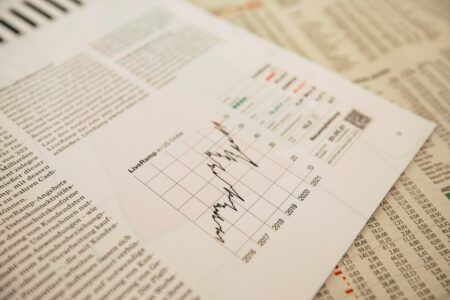
WBTC (Wrapped Bitcoin) has arguably been one of the more interesting recent developments for the crypto space. Acting as a bridge between Bitcoin and Ethereum, WBTC is a method of representing bitcoin as an ERC-20 token, so that it can be traded on the Ethereum ecosystem – with each WBTC token backed one-to-one by bitcoin.
While the launch of WBTC hasn’t perhaps garnered the attention many expected, AirSwap, a decentralized, peer-to-peer trading network for Ethereum tokens, is a company that is trying to change that.
We spoke with Jay Kurahashi-Sofue, marketing lead at AirSwap, about the project, DEXs vs. centralized exchanges, and WBTC.
How did the the WBTC launch go from AirSwap’s perspective and are you surprised with the level of traction it is getting?
When we were approached by the DAO, we were excited to be given the opportunity to collaborate with like-minded organizations–all falling under one vision of a truly decentralized future.
To date, AirSwap has seen trades of WBTC valued at 350 ETH. We’re seeing a lot of interesting initiatives stemming from the Decentralized Finance (DeFi) cohort: Compound finance is enabling money markets on Ethereum; MakerDAO is enables traders to take collateralized debt positions (CDPs) with DAi, MakerDAO’s an asset-backed stablecoin; and more. As we continue to see the blockchain ecosystem grow, we expect to see more innovation and use-cases within the DeFi ecosystem emerge for WBTC.
Why do you think DEXs comprise such a small percentage of total volume in the crypto markets?
We’re in the very early stages of blockchain technology and earlier stages for decentralized trading. Because of the immutability of blockchain technology, ensuring maximum security of digital wallets is imperative; otherwise, the traders’ crypto assets can be easily compromised by malicious actors. By trading and storing crypto assets on centralized exchanges, traders don’t have full custody of their own private keys and therefore digital wallet.
In 2018 alone, 6 centralized exchanges were hacked, which led to losses amounting to $865 million. If even just a fraction of the victims had full custody over their own crypto assets, both stats would have been significantly lower.
Improving education around blockchain technology and ensuring successful communication of these educational pieces will contribute to the increased use of non-custodial, decentralized platforms. Narrowing this gap by bringing user-friendly, intuitive products to prospective traders will also help accelerate this adoption.
At AirSwap, we are ensuring that we are delivering on both of these points: on the education side, we’re continuing to identify customer pain points and ensuring that we develop robust content, share our expert perspective at industry events, and looking to outside experts and resources to improve on our internal knowledge-base. And with our product design, we continue to push on design and development principles that contribute to our progress towards our mission to empower people through global, frictionless trade.
What is it like being a DAO member, merchant and exchange for WBTC?
AirSwap is uniquely able to serve as all three functions within the WBTC DAO: member, merchant, and exchange. As a DAO Member, we have the privilege of having voting rights within the DAO and shaping the future of the WBTC DAO. With dozens of calls, collaborative documents, and virtual ideation sessions that have already taken place, we’re even more excited with what the future holds for the DAO.
As a WBTC DAO merchant and exchange, AirSwap is able to contribute to the operations of WBTC in a more impactful manner. The DAO carefully selected only decentralized products to become a member, merchant, and/or exchange for the WBTC initiative. Therefore, we, as a DAO, are able to more powerfully leverage the popularity of BTC to make decentralized exchanges a more appealing solution to trade crypto assets.
We recently launched fiat-to-ETH conversion capabilities with a Wyre integration. Prior to both initiatives, traders had no choice but to use centralized, custodial exchanges as the initial entry point into crypto. Now, they no longer have to and can choose to directly trade on non-custodial trading solutions like AirSwap.
To further equip our traders with the information they need to make informed trading decisions, we also launched DexIndex.io, a free, open-source tool that searches Ethereum DEXs for the best prices. At launch, DexIndex featured 6 different Ethereum DEXs; thanks to contributions from the wider community, DexIndex now reports token prices across 10 different Ethereum DEXs.
As a decentralized trading network, we know and understand the needs of Ethereum traders. With this direct interaction with traders, having the freedom to address those needs by supplying WBTC is imperative. Presently, WBTC is being traded mostly for speculative reasons; being able to act on these opportunities directly will also empower us to shape the evolution of BTC on Ethereum.
What are your plans at AirSwap in 2019?
We are announcing some of our 2019 initiatives for AirSwap via our own digital channels in March. Please stay tuned for the update for more information.
What are your thoughts on regulation in the industry and do you think that tough regulation could undermine Decentralised Exchanges?
Regulation in the industry is a complex topic but one that we see as being positive for the industry as a whole. For example, amongst many different kinds of malicious trading practices, wash-trading is a practice plaguing centralized, custodial exchanges.
In response, the industry has already taken the lead towards self regulation with transparency initiatives like the Blockchain Transparency Report, Exchange Liquidity Whitepaper by CoVenture Crypto, and more. Government agencies are also proactively trying to protect individuals with regulatory frameworks like the “Digital-assets existing law” passed by the state of Wyoming. Because decentralized trading platforms do not take custody or rely on internal settlement, in many ways they may actually be better positioned to adapt to changes in the regulatory environment..








